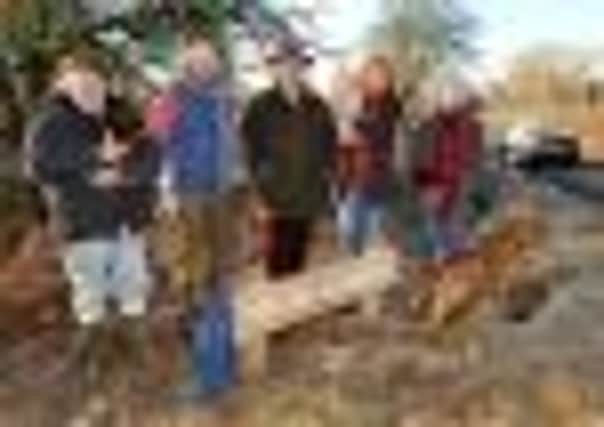‘Shockingly noisy cattle grids’ are destroying peace on the commons


Resident Kate Jenkins, who lives at Romany Ridge off North Common Road, said: “Over 4,000 vehicles a day use the road, it’s a ‘B’ road so the speed limit can’t be lowered below 40mph.
“The cattle grids really should not be there. The noise is shocking, dreadful and it’s like listening to a pounding oil rig.
Advertisement
Hide AdAdvertisement
Hide Ad“My bedroom window is 150 yards away and it’s a constant nightmare – I’m suffering from sleep deprivation.” The noise was intensified last Monday by joy riders who drove onto Pound Common via a cattle grid.


Kate said: “They were here again at the weekend and we called the police who spoke to them. They were apologetic and polite and said they hadn’t intended to cause trouble.”
Kate’s house is also near Beggars Wood Road, which has another cattle grid, with about 2,000 vehicles a day passing over it, according to a survey by East Sussex Highways.
The five commons, collectively known as Chailey Common, are linked by the cattle grids and were fenced to restore the Heathland through grazing.
Advertisement
Hide AdAdvertisement
Hide AdA spokesman for East Sussex County Council said: “We have been talking to local people about the cattle grids and have been trialling temporary chicanes to slow traffic further.


“Noise-meter readings are showing this is reducing the noise. Plans are currently being drawn up to potentially make the chicanes permanent.”
Philip Vesey-Holt, who lives at Phantom Ranch off North Common Road, said: “This is a main arterial road. Fencing off the Common and putting in cattle grids was an expensive use of tax payers’ money and the noise from the grids was not considered during the procurement process. The temporary chicanes, which will cost the council about £63,000 to make permanent, don’t really work.
“Each common could have been fenced off separately without the need for cattle grids.”
Advertisement
Hide AdAdvertisement
Hide AdHowever, a county council spokesman said: “Chailey Common Management Committee favoured a more open feel to the commons rather than fencing individual commons.
“This was included in the design that went out to consultation with local people and then approved. As part of the design, speed limits were lowered to 40mph on the roads where livestock cross and we will continue to monitor the situation.”
Although sheep and cattle have been grazing the ancient commons since the fencing work, sheep were moved off last month, after a number of dog attacks before Christmas.
Kate and Philip say they believe dog walkers are being unfairly blamed for the problems and they question whether the grazing plan is really working that well after a sheep was hit and killed by a vehicle.
Advertisement
Hide AdAdvertisement
Hide AdKate said: “Sheep don’t like the bracken so they look for grass on the verges too close to the road. The land isn’t suitable for grazing. It needs preparation and should be agricultural grazing land.”
Tony Ewell, who has lived close to the commons for more than 30 years, wrote to the Planning Inspectorate three years ago arguing that the enclosures would have been totally unnecessary if invasive plants had been managed and dealt with more effectively.
He stated in his letter dated June 17, 2009: “...the heavy invasion of birch and bracken throughout the Common as a whole is a disgrace. Anyone with any knowledge of plant growth, and even those without, can see that the vast majority of this excessive growth, particularly the birch and gorse, is less than 20 years old.”
Farmer Carole Uridge, who has been grazing about 80 Hebridean sheep on the commons, said the sheep were due to come off before Christmas after a trial period and would be put to graze there again in the spring.
Advertisement
Hide AdAdvertisement
Hide AdHowever, she conceded: “We’ve had eight sheep worried and killed by dogs. We had one that was slightly grazed by a car and, unfortunately, one was killed - but dogs are the main problem.
“We had about 20 rams on there. They had been used for breeding and they were fine because they stood their ground and weren’t attacked. We will put sheep back on in March, April time and maybe we will have to use more rams.
“Grazing is important because the ancient heathland was created by grazing in the first place.”
Carole said the noise problems being experienced by residents living close to the grids was “a matter for the council”.
Advertisement
Hide AdAdvertisement
Hide AdKate Jenkins, who has vowed to fight on to end the “nightmare noise” that is keeping her awake, said: “Cattle grids in the New Forest have a different design and are more rounded to minimise noise. The council should have done its homework.”